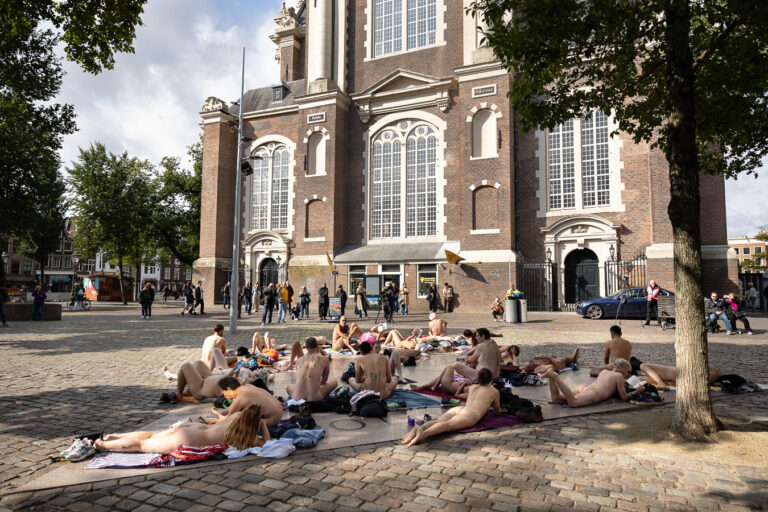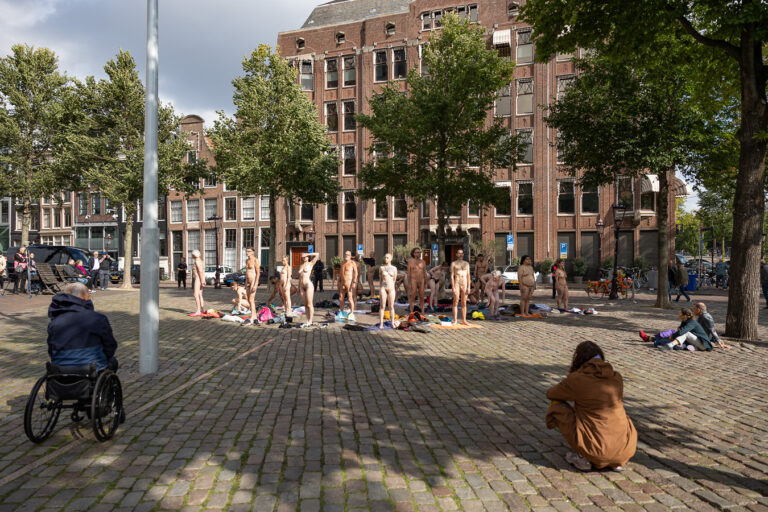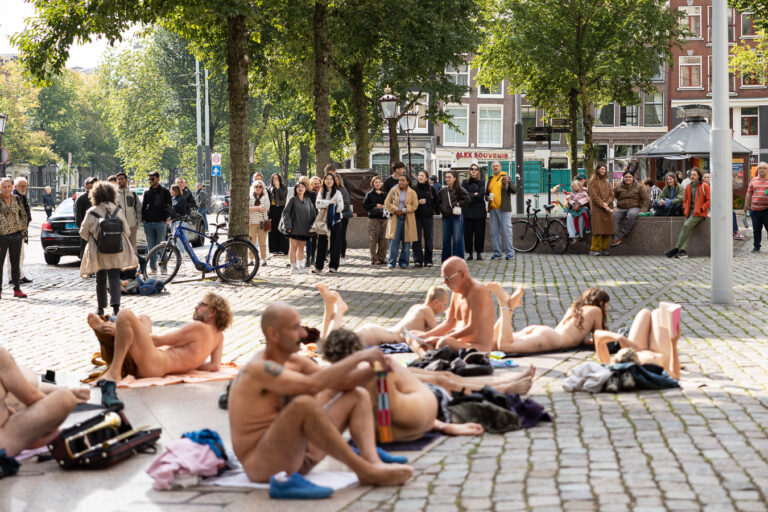Naked Recreation - 'a tribute to Amsterdam in voice and body' (2025) 60min.
A Radical Act of Visibility
On Saturday, September 13, 2025, Amsterdam is set to host a groundbreaking public performance titled “Naked Recreation”. This highly anticipated event, a bold fusion of art and social commentary, is a new choral work from the artist Richard John Jones. Commissioned by ROZENSTRAAT, an Amsterdam-based project space for contemporary visual art, the performance is a striking exploration of two core human elements: the body and the voice. It is scheduled to feature an ensemble of five naked soloists and a choir of fifty naked singers, staged directly in a public urban setting.
This project transcends a typical artistic showcase, functioning instead as a poignant statement about vulnerability and expression within the city’s domain. The performance is not merely an act of exhibition but a profound gesture. It serves as a declaration of visibility and freedom, asserting the fundamental human right to simply exist in one’s natural state. The artist’s transition from an individual identity, Richard John Jones, is a deliberate and meaningful choice that mirrors the project’s central themes. This change of name, described as an “undoing of the self,” positions the artist as a vessel for a universal idea rather than a singular creator. The transformation from a limited subject position to an “enunciation of a higher power or spirit” perfectly aligns with the performance’s goal of collective expression and liberation through the shedding of self.
The Body as a Living Canvas
The central premise of “Naked Recreation” is the philosophical use of nudity. It moves beyond mere symbolism, reframing the naked body as a powerful and radical gesture. By choosing to take up public space without clothing, the performers deliberately reveal their vulnerability, thereby claiming the space and daring to “imagine other ways of being”. This act directly challenges societal norms regarding how individuals occupy and share public areas, forcing a conversation about where the lines between public and private truly lie.
This artistic strategy draws a direct parallel with the artist’s own personal and professional evolution. The transition embodies the performance’s core concept of shedding one’s physical and personal garments to embody a universal, collective voice. The act of surrendering a specific, individual name transforms the artist from a single creator into a living embodiment of the larger idea. This makes the artist’s new identity an integral part of the work’s meta-narrative, elevating the performance from a simple spectacle to a deeply philosophical and cohesive artistic statement.
Echoes from Amsterdam’s Past
“Naked Recreation” is not an isolated event but the latest manifestation of Amsterdam’s long history of using the naked body for protest and social commentary. The performance draws on three distinct historical movements, each using nudity as a powerful tool for transformation. These references highlight a continuous tradition of resistance and reinvention that is deeply embedded in the city’s identity. The piece synthesizes a progression of purpose, evolving from a spiritual act to a political strategy and, ultimately, to a reclaiming of physical space.
The performance’s first reference is the Anabaptist uprising of 1535. During a bitterly cold winter, a group of forty religious rebels, known as the “naked walkers” (naaktlopers), stripped off their clothes, burned them in a fire, and ran through Dam Square shouting prophecies of divine wrath. Their act was a prophetic protest against religious oppression, an emphatic rejection of wealth and opulence. Although their protest was brutally suppressed, the act became a legendary moment in the city’s history, giving rise to the Dutch expression “the naked truth”.
A second reference is the feminist movement, Dolle Mina, which emerged in 1969. The group used their bodies for “playful protest”. The movement’s members famously staged a protest by breaking into a gynecologist’s meeting with the phrase “baas in eigen buik” (master of our own belly) written on their bare stomachs. This was a strategic move to reclaim the female body and attract media attention. It was an act of deliberate confrontation that simultaneously protested the sexualization of the female body while using it as a political tool for emancipation.
The final and most contemporary reference is the LGBTQIA+ activism of the 1990s. This movement, led in part by Mattias Duyves and his Stichting GALA, sought to increase the visibility of the community. A key inspiration for the performance is Duyves’ fight to protect the Oeverlanden, a well-known gay cruising spot, from urban development. The performance’s partnership with Stichting het Homomonument is deeply meaningful, as the monument itself serves as a site of remembrance and protest for those persecuted for their sexual orientation, symbolizing past, present, and future. The fight to protect the Oeverlanden was about visibility and the right to exist in public, communal spaces.
This historical context provides a layered understanding of “Naked Recreation.” The performance is a spiritual act of shedding the self, a political act of making a statement on social norms, and a physical act of reclaiming public space. The parallels between the past and present demonstrate a continuous thread of resistance, giving the performance profound cultural significance.
































